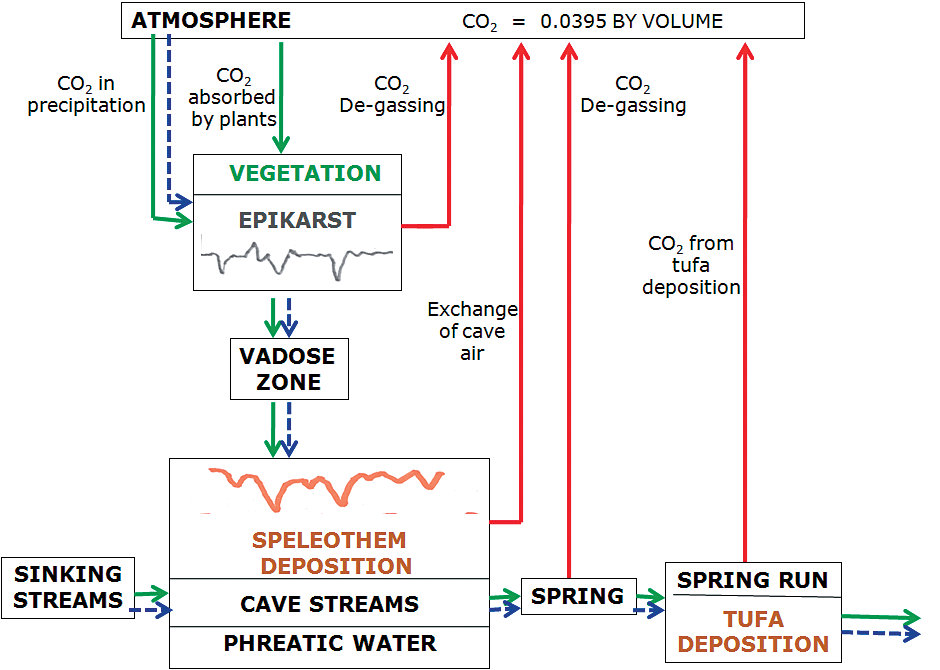Carbon fluxes in Karst aquifers: Sources, sinks, and the effect of storm flow
DOI:
https://doi.org/10.3986/ac.v42i2-3.659Ključne besede:
CO2, karst aquifers, springs, carbon loadingPovzetek
An effective carbon loading can be calculated from measured alkalinity and pH of karst waters. The carbon loading is independent of the degree of saturation of the water and does not depend on the water being in equilibrium with the carbonate wall rock. A substantial data base of spring water analyses accumulated by students over the past 40 years has been used to probe the CO2 generation, transport, and storage in a variety of drainage basins that feed karst springs. Carbon loading in the water exiting karst drainage basins depends on the rate of CO2 generation in the soils of the catchment areas and on the partitioning between CO2 dissolved in infiltration water and CO2 lost by diffusion upward to the atmosphere. For any given drainage basin there are also influences due to vegetative cover, soil type, and the fraction of the water provided by sinking stream recharge. Losses of CO2 back to the atmosphere occur by speleothem deposition in air-filled caves, by degassing of CO2 in spring runs, and by tufa deposition in spring runs. There are seasonal cycles of CO2 generation that relate growing season and contrasts in winter/summer rates of CO2 generation. Overall, it appears that karst aquifers are a net, but leaky, sink for atmospheric CO2.
Keywords: CO2, karst aquifers, springs, carbon loading.
Prenosi

Prenosi
Objavljeno
Kako citirati
Številka
Rubrike
Licenca
Avtorji jamčijo, da je delo njihova avtorska stvaritev, da v njem niso kršene avtorske pravice tretjih oseb ali kake druge pravice. V primeru zahtevkov tretjih oseb se avtorji zavezujejo, da bodo varovali interese založnika ter da bodo povrnili morebitno škodo.
Podrobneje v rubriki: Prispevki




